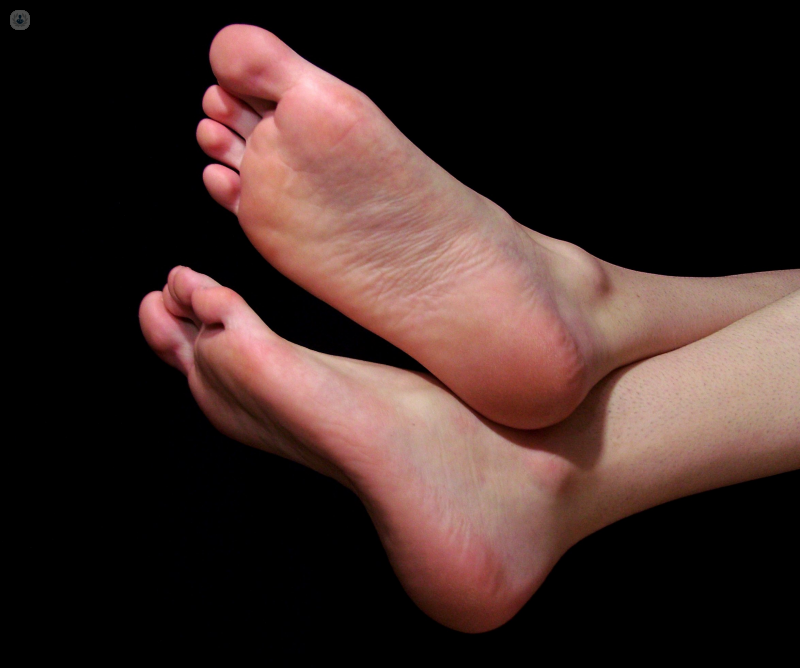Plantar fasciitis, a.k.a ‘policeman’s heel’
Escrito por:Are you experiencing heel pain that just won’t go away? One possible cause is plantar fasciitis. Top orthopaedic surgeon Paul Hamilton explains this condition.

What is plantar fasciitis?
Plantar fasciitis or 'policeman’s heel' is pain under the foot near the heel. It originates from a strong band of fibrous tissue that runs from the heel to the toes known as the plantar fascia, which supports the arch of your foot. Symptoms of plantar fasciitis are often worse first thing in the morning or after sitting for periods and improve after ‘stretching’ the plantar fascia. The pain often returns after standing for long periods.
Can plantar fasciitis be cured?
With proper rest and treatment, the plantar fascia can heal. The aim is to relieve inflammation, improve strength and flexibility, and allow tears in the ligament to recover. Treatments options include physiotherapy, insoles, podiatric assessment, gait analysis, image guided injections, extra-corporeal shockwave therapy and, occasionally, surgical procedures.
How long does it take to recover from plantar fasciitis?
The plantar fascia can heal in two to three weeks with rest and proper treatment, but delaying diagnosis and treatment (as often happens) can lead to the condition becoming chronic and lasting several months (and occasionally years).
How do you treat plantar fasciitis?
Physiotherapy is usually recommended, but there are a number of options, and it is important that treatment is individualised for each specific case. Insoles and night splints may be recommended to provide support for the foot.
Surgical treatment for plantar fasciitis
In very rare circumstances, an option to release the plantar fascia may be appropriate and this can be discussed during the consultation. Recovery may take several months and will require a period of immobilisation in a cast or a boot.
If you are experiencing foot pain or ankle pain, you should consult your doctor or a specialist.


